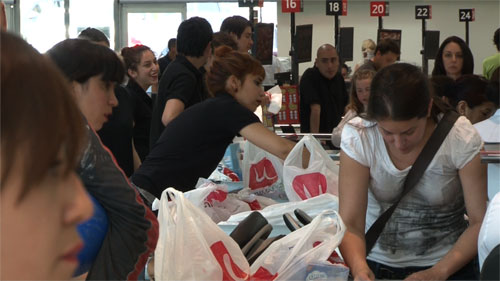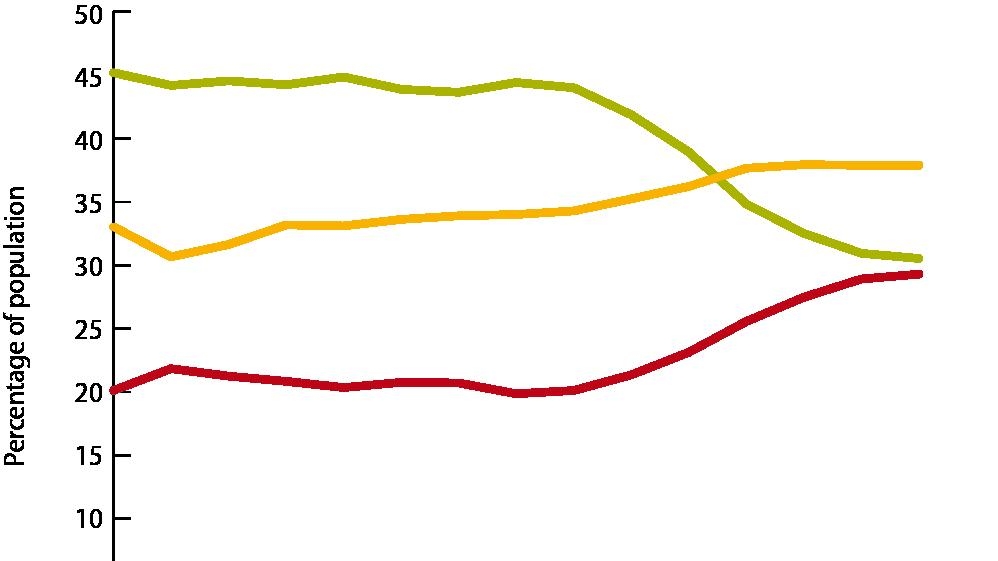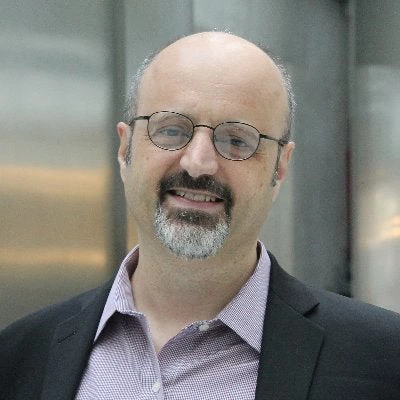También disponible en español

Since the Great Recession of 2008, there has been a widespread sense of malaise among the American middle class. Their incomes are close to stagnant, employment has not recovered, and the gap between them and the famously rich top 1% continues to grow. Look south of the Rio Grande, though, and it is quite a different picture. In the last decade, moderate poverty (under U$ 4 a day) in Latin America and the Caribbean fell from over 40% to 28%.
And if you consider the Latin American middle class to be those people earning between $10 and $50 a day (per person), then that group expanded by half: from 100 to 150 million people – nearly a third of the population. (See Figure 1)
These are big numbers. What’s behind such a remarkable process of social transformation in a continent, which until recently was synonymous with stagnation?
A World Bank study launched this week points to the obvious proximate causes: sustained, if not stellar, economic growth combined with falling inequality.
The latter is unprecedented, at least as far back as we have data: the Gini coefficient fell in 12 of the fifteen countries analyzed in the report. And in many cases the fall was of five points of more.

Behind growth and inequality reduction, in turn, there is a rare combination of a benign external environment, better fiscal and monetary policies (in most places), a falling skill/wage premium, and social policies that were finally designed to actually reach poor people.
But the study does not paint a completely rosy picture. Sure, there has been considerable progress in the region over the last decade or so. But by the authors’ definition – which is based on the income needed to attain a modicum of economic security – fewer than 1 in 3 Latin Americans have reached the middle class.
Almost seventy percent are either still poor, or live in a crowded limbo between $4 and $10 a day, which they call the vulnerable class.
This group is now the largest economic class in Latin America – it contains both the median and the modal Latin American citizen.
In addition, the study shows that this is a region where birth still matters a great deal. The education, income and social position of your parents are still good predictors of where you will end up.
They’re too good… There is an interesting (apparent) paradox there: the last decade saw a lot of short-term upward income mobility, but much less long-term, intergenerational mobility. This is a part of the world where the distribution of opportunities remains highly unequal.
So, what about the next decade? What happens if commodity prices fall, and foreign demand from places like Europe and China stagnates? Can social progress in Latin America continue? What happens to growth will surely matter.
But the report argues that the answer might also depend on how this new middle class engages with the rest of society, and the states that govern it.
The smaller middle classes of earlier years were almost indistinguishable from the elite, and were comfortable with a fragmented, disengaged social contract. Outside Brazil and Argentina, they typically paid low taxes, and got crappy public services back.
Only it didn’t matter to them: they opted out of public education and health systems, and even bought private security and electricity generation in some places.
Will the new, larger middle classes stay that course? Or can they shift to another equilibrium, where taxes might perhaps be a little higher, but public services could also be better – and thus not something to run away from.
Imagine public health systems and schools that the middle class opted into, rather than out of! Not only might this new social contract be convenient for them, it would also make it much more likely that the vast majority, who are still poor or vulnerable would continue to have a fair shot at the upward movement we have seen in the last ten years.


Join the Conversation